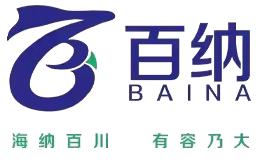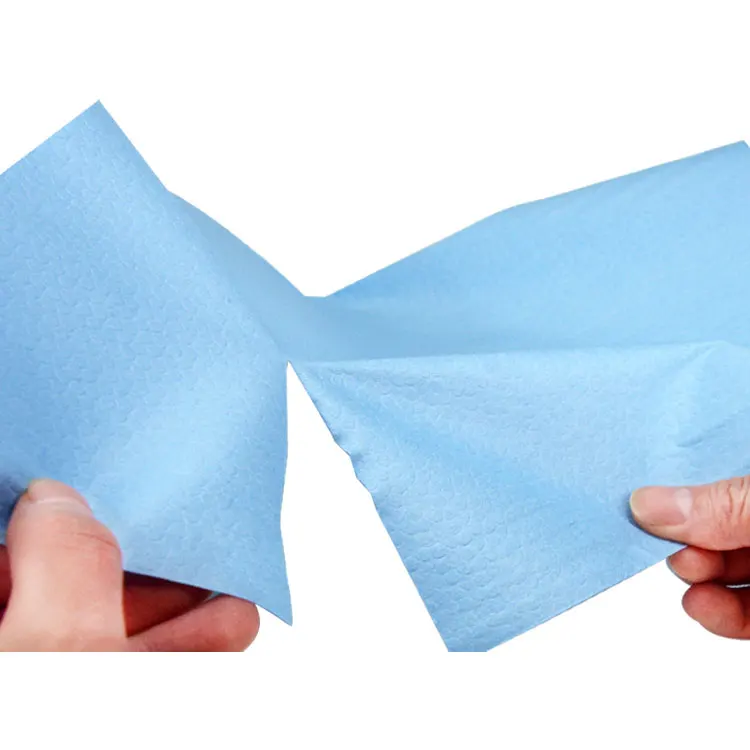Արտադրանքային գործընթացներ՝ կարգավոր տեսակի պապերի դեպքում ստանդարտ պապերից տարբերվող
Տարբերությունները հիմնական նյութերի ընտրման ժամանակ
Ճիշակի մաքուր թուղթ պատրաստելու ճանապարհը սկսվում է ճիշտ բաղադրատոմսի ընտրությամբ աղբյուրում: Շատ արտադրողներ ընտրում են կենսական կանխարդված թելք, որը հավաքվում է խիստ կայուն զարգացման ստանդարտների համապատասխան անտառներից: Սա ոչ միայն լավ որակյալ հումք ստանալու մասին է, այլ նաև մեր մոլորակի պաշտպանության մասին, քանի որ այդ անտառները չեն կտրվում կարճաժամկետ շահերի համար: Սովորական թղթի մասին պատմությունը մեկ այլ է: Շատ ապրանքանիշեր փողի խնայման համար խառնում են վերամշակված թելքեր, սակայն այդ թելքերը իրենց հետ բերում են իրենց խնդիրների հավաքածուն: Հին մանրաթելերի մնացորդներ, պլաստիկի կտորներ, նույնիսկ սղոցի փոքր մասնիկներ բոլորը հայտնվում են վերջնական ապրանքում: Արդյունքը ինչ է լինում: Թուղթ, որը դժվար է մաքրության մեջ պահել և ժամանակի ընթացքում կոտրատվում է կամ գունաթափվում: Այդ իսկ պատճառով էլ մաքուր թղթի արտադրության մեջ նյութի ընտրությունը շատ կարևոր է: Մաքրության ստանդարտների նկատմամբ վարկանդություն ցուցաբերող ընկերությունները գնի ցուցիկներից ավելի հեռու պետք է նայեն և մտածեն, թե ինչ է իրականում ավարտված թերթի վրա հայտնվում:
Արտադրանքային տեխնիկաներ անպարագայության նվազման համար
Այն արտադրողները, ովքեր ցանկանում են արտադրել իսկապես մաքուր թուղթ, հիմնվում են որոշ բավականի հարազատ մեթոդների վրա, որոնք նախագծված են տարբեր տեսակի ցանկատեր աղտերից ազատվելու համար, ինչպիսիք են փոշու մասնիկները և քիմիական մնացորդները: Փակ ցիկլային ջրի վերամշակման համակարգերը և լավագույն ֆիլտրացիոն սարքավորումներն են հնարավոր դարձնում սա: Ամբողջ գործընթացը սկզբից մինչև վերջ խիստ վերահսկվում է, որպեսզի արտաքին ցանկացած բան չընթանա ներս, ինչը պահում է վերջնական ապրանքը իսկապես մաքուր: Սովորական թղթի արտադրությունը սովորաբար չի զբաղվում այդպիսի խիստ վերահսկողությամբ: Շատ ավանդական գործարաններ պարզապես չունեն այդպիսի թանկարժեք համակարգեր, այնպես որ նրանց թղթերը ավելի շատ խառնուրդներ են վերցնում ճանապարհին: Դա բացատրում է, թե ինչու է սովորական գրասենյակային թուղթը երբեմն կոշտ զգացվում կամ տարօրինակ հոտ ունենում համեմատած հատուկ մաքուր թղթերի հետ: Պահանջարկի մաքուր թուղթ արտադրող ընկերությունների համար այս ճկուն արտադրական տեխնիկաների ներդրումը այլևս ըտրություն չէ, եթե նրանք ցանկանում են հասնել այդ բարդ արդյունաբերական ստանդարտներին մաքրության մակարդակի և էկոլոգիական որակների տեսանկյունից:
Մատերիալի կառուցվածքը և մակերևույթի հատկությունները
Սարքերի պարտությունը անպակաստ թվորում
Բացի մաքրության բարձր մանրաթելերի առանձնահատկությունը, որը շատ կարևոր է լավ տպման արդյունքներ և ճիշտ ներկի մակերեսային մշտականություն ապահովելու համար: Երբ թուղթը այդ մաքրություն է ցուցաբերում, դա էությամբ նշանակում է, որ մակերեսին ավելի քիչ փոշի և աղբ է ապրում, ինչը մեծ տարբերություն է անում հատկապես փաթեթավորման նյութերի կամ վարպետական տպագրությունների դեպքում: Իրոք, մաքուր մանրաթելերը նաև պաշտպանում են տպիչները: Մենք հետազոտություններ ենք տեսել, որտեղ ցույց է տրված, որ տպիչները ավելի երկար են ապրում, երբ չեն պայքարում կրակված թղթի կուտակումների դեմ: Այն ձեռնարկությունների համար, որոնք կենսանյութերի կամ հարուստ ապրանքների արտադրությամբ են զբաղված, մաքուր թուղթ ընտրելը միայն տեսքի հետ չի կապված, այլ անհրաժեշտ է խիստ հիգիենիկ պահանջների պահպանման համար, ինչպես նաև հստակ և կանոնավոր տեքստերի ու նկարների ապահովման համար ամենօրյա տպագրության ընթացքում:
Միներալային լցույթներ ստանդարտ թվերում
Սովորական թղթի բաղադրությունը սովորաբար ներառում է տարբեր հանքային լրացուցիչներ, որոնք օգնում են թղթին ավելի անթափանց դարձնել, սակայն ազդում են մակերեսի հարթության վրա: Երբ այդ ավելացված նյութերի քանակը չափից շատ է, առաջանում են տպման բազմաթիվ թերություններ և անհավասար տեքստուրա էջի վրա: Ակնհայտ է, որ լրացուցիչներն իրենց առավելություններն ունեն, ինչպես օրինակ ամրությունը և ծավալը, սակայն արտադրողները երբեմն դրանք չափից շատ են օգտագործում, ինչի արդյունքում թույլ տրված վերջնական արդյունքը ավելի կոշտ է լինում, քան ցանկացած մարդ ցանկանում է: Մաքուր թուղթը մոտեցում է ամբողջովին այլ կերպ՝ օգտագործելով շատ քիչ կամ ընդհանրապես առանց լրացուցիչների: Այս պարզ փոփոխությունը մեծ տարբերություն է առաջացնում թղթի վարքի վրա տպման գործընթացի ընթացքում: Տպարանները նկատում են, որ ավելի հարթ տպում է կատարվում և շատ քիչ խնդիրներ են առաջանում ներկի կպչուն հատկության հետ, որը հատկապես կարևոր է այն համեղ չորս գունային աշխատանքների դեպքում, որտեղ յուրաքանչյուր մանրամասն կարևոր է:
pH Նեյտրալությունը և Իոնային Կանցումների Գործունեություն
Թղթի չեզոք pH մակարդակի պահումը օգնում է այն խափանումից խուսափել ժամանակի ընթացքում, ինչը նշանակում է, որ նյութը շատ ավելի երկար է մնում թուղթ թերթերի վրա: Ստանդարտ թղթի ապրանքները հաճախ պարունակում են թույլ թթուներ, և այդ թթվային հատկությունները իրականում կարող են սկսել քիմիական փոփոխություններ, որոնք վնասում են թղթի կառուցվածքը: Ուսումնասիրությունները ցույց են տվել, որ երբ թուղթը պահպանում է չեզոք հավասարակշռություն, այն ավելի երկար է մնում ամուր և պահպանում է ավելի լավ որակը: Վնասակար իոնների բացակայությունը մաքուր թուղթը դարձնում է հատկապես լավ փաստաթղթերի և այլ նյութերի պահման համար, որտեղ կարևոր է կայունությունը: Շատ գրասենյակներ և տներ նախընտրում են այս տեսակը, քանի որ գիտեն, որ նրանց կարևոր փաստաթղթերը չեն դեղնի կամ չեն դառնա փխրուն ընդամենը մի քանի ամիս անց պարզապես շրջապատում նստելուց հետո:
Կանխադրումների Կառավարում
Միկրո-Վերափոխություններ Ստանդարտ Պապերում
Սովորական գրասենյակային թուղթը թույլ է տալիս միկրոթելերի արտանետում, ինչը շատ կարևոր է այն վայրերում, որտեղ անհրաժեշտ է ուլտրամաքրություն, օրինակ՝ լաբորատորիաներում կամ հիվանդանոցների վիրահատարաններում։ Երբ այդ թելերը կտրվում են, դրանք վերածվում են միկրոսկոպիկ մասնիկների, որոնք բարձրանում են օդում և կարող են խանգարել փորձերին կամ թափանցել բժշկական սարքերի մեջ։ Մաքուր սենյակներով աշխատող ընկերությունները պետք է տեղեկացված լինեն այս խնդրի մասին և ընտրեն թուղթ, որն արտանետում է նվազագույն քանակով մասնիկներ, փոխարեն սովորական թղթի ստոկի։ Որոշ արտադրողներ իրոք փորձարկում են տարբեր թղթի տարբերակներ վերահսկվող պայմաններում՝ ընտրումից առաջ, քանի որ նույնիսկ փոքրագույն աղտոտվածությունը կարող է հետագայում խորանկատ խնդիրներ առաջացնել։

Դուստ-フリー Գարանտիա Կլեան Պապերի համար
Ընդհանրապես ամենամաքուր թղթի արտադրողները փոշին առանց խորտակված ապահովագրություններ են առաջարկում, որոնք նշանակում են, որ նրանց ապրանքները շատ քիչ խառնուրդներ են պարունակում: Նրանք տարբեր տեսակի թեստեր են անցկացնում, որպեսզի ստուգեն արտադրանքում փոշու բացակայությունը: Սա օգնում է փոխարքի խնայել մեքենաների մաքրությունը պահելու վրա և ընդհանրապես ավելի լավ որակի վերջնական արդյունքներ ստանալ: Երբ թուղթը մաքուր մնում է, այն ավելի լավ է տպման գործընթացների ընթացքում կպչում և ավելի հստակ պատկերներ է ապահովում: Բացի այդ, քիչ փոշին նշանակում է, որ սարքավորումները ավելի երկար են ծառայում՝ առանց հաճախադեպ նույնացումների կամ խորադիտումների, որոնք կարող են բավականին թանկ լինել:
Silicone-Free -sizing Applications
Բազմաթիվ մաքուր թղթե ապրանքներ իրականում օգտագործում են չափի մշակումներ սիլիկոն չպարունակող նյութերով՝ դրանք ավելի լավ ավարտի ենթարկելու և միաժամանակ միջավայրին օգնելու համար: Սովորական թղթում երբեմն կա սիլիկոնով պատրաստված չափ, սակայն սա կարող է հետագայում անակնկալ քիմիական խնդիրներ առաջացնել: Մաքուր թղթի արտադրողները փոխադրվել են սիլիցիում չպարունակող լուծումներին, որոնք օգնում են արտադրության ընթացքում աղտոտումը կանխել: Խիստ մաքրության պահանջներին համապատասխանելու հարցում տարբերությունը շատ կարևոր է, ինչպես նաև կրճատվում է մեր մոլորակի վրա բացասական ազդեցությունը: Թղթի ընկերությունները այսօր գտնում են միջոցներ միաժամանակ մաքուր և կանաչ լինելու համար:
Համագործակցության ստանդարտներ և սերտիֆիկացման պահանջումներ
ISO 14644 Մասնիկների Հաշվելու Օրդինատուրներ
ISO 14644-ը կարևոր ուղեցույց է հանդիսանում վերահսկվող միջավայրերում մաքրության մակարդակները պահպանելու համար, որը հատկապես կարևոր է մաքուր թղթի արտադրող ընկերությունների համար: Ստանդարտը սահմանում է օդի մեկ խորանարդ մետրում մասնիկների համար կոնկրետ սահմանաչափեր, որոնք ուղղակիորեն ազդում են տարբեր կիրառումների համար նախատեսված նյութերի որակի և անվտանգության վրա: Թղթի արտադրողները ստիպված են լինում խիստ հետևել այդ տեխնիկական պահանջներին, եթե ցանկանում են պահպանել իրենց սերտիֆիկացիան և հարմարավետություն տրամադրել հաճախորդներին, որ իրենց ապրանքը իսկապես համապատասխանում է այդ որակի չափանիշներին: Երբ ընկերությունները ճիշտ կերպով հետևում են ISO 14644 ստանդարտի ուղեցույցներին, նրանք ապահովում են, որ իրենց մաքուր թուղթը բավարարում է արդյունաբերության խիստ պահանջները: Սա հատկապես կարևոր է դեղագործական կամ էլեկտրոնային արտադրության ոլորտերում, որտեղ նույնիսկ ամենանվազագույն աղտոտման դեպքում էլ կարող են առաջանալ խոշոր խնդիրներ:
Ստանդարտ տանձի համար փորձարկման պրոտոկոլների բացակայություն
Սովորական գրասենյակային թուղթը հաճախ տարբեր խնդիրներ է առաջացնում, քանի որ իրականում չկան լավ փորձարկման ստանդարտներ: Որակը շատ տատանվում է մի շրջանից մյուսին: Մաքուր թուղթը խորապես փորձարկվում է նախքան խանութներում հայտնվելը, սակայն ստանդարտ թուղթը այդպես չէ: Դա նշանակում է, որ ընկերությունները, որոնք կարևոր փաստաթղթերի կամ փաթեթավորման համար այն օգտագործում են, երբեմն լուրջ խնդիրների են բախվում: Մենք դեպքեր ենք տեսել, երբ տպագրված նյութերը կործանվել են, քանի որ թուղթը չի կարողացել դիմանալ հիմնարար պայմաններին: Փորձարկման ավելի լավ ընթացակարգերը այստեղ մեծ տարբերություն կառաջացնեին: Եթե արտադրողները սկսեին իրենց ապրանքները ճիշտ ստուգել արտադրության ընթացքում, ապա գնորդները ճիշտ կիմանային, թե ինչ են ստանում, փոխարենը, որ ամեն պատվերի դեպքում ռուսական ռուլետկա խաղալ:
Պակետավորման և պահումի պրոտոկոլներ
Վակուումային փակված ploy-արտապատում համարյալության համար
Փոշին փակելու գործընթացը, որն փաթաթված է պլաստիկ ֆիլմով, մեծ դեր է խաղում մաքուր թղթի մաքրությունն ապահովելու հարցում՝ պահման և փոխադրման ընթացքում: Երբ արտադրողները օգտագործում են այս մեթոդը, իրենց հիմնականում ստեղծում են պաշտպանիչ պատնեշ փոշու մասնիկների, խոնավության և այլ նյութերի դեմ, որոնք կարող են ժամանակի ընթացքում թղթի մեջ թափանցել: Լաբորատոր աշխատանքներով կամ բժշկական պիտույքներով զբաղվող արդյունաբերությունները պետք է բավարարեն խիստ աղտոտման վերահսկման պահանջները, այդ իսկ պատճառով փոշին փակված փաթեթները օգնում են նրանց համապատասխանել այդ նորմերին: Ստանդարտներին համապատասխանելուց բացի առավելությունները շատ ավելի հեռու են ընթանում: Այս եղանակով պահվող թուղթը ավելի երկար է մնում թերթիկների վրա՝ առանց վատանալու, ինչը նշանակում է, որ հաստատությունները պետք է ավելի հազվադեպ փոխեն պաշարները: Ամենակարևորը, երբ հետազոտողները կամ հիվանդանոցի անձնակազմը բացում են այս փաթեթները, նրանք կարող են վստահել, որ ներսում գտնվողը չի վնասվել կամ վնասվել է կանխել է կամ փոխադրման ընթացքում:
Ստանդարտ արտադրանքի սովորական պահումը անտառումներ
Օֆիսային թղթի համար սովորական պահման տեխնիկան իրականում որոշ իրական խնդիրներ է առաջացնում, որոնք վնասում են որակը ժամանակի ընթացքում: Երբ թուղթը խոնավ կամ փոշոտ տեղերում է մնում, այն շուտով քայքայվում է: Մենք բոլորս տեսել ենք, թե ինչ է տեղի ունենում, երբ փաստաթղթերը նույնիսկ մի փոքր խոնավանում են՝ դրանք դեղնում են, կպչում են միմյանց և դառնում անօգտագործելի: Կազմակերպությունների համար, որոնք ամենօրյա կարիք ունեն հուսալի թղթի մատակարարման մեջ, սա շատ կարևոր է: Եզրափակումը պարզ է՝ ավելի լավ պահումը նշանակում է ավելի լավ արդյունքներ: ձեռնարկությունները պետք է մտածեն ճիշտ հարկերի ձեռք բերման, կլիմայական վերահսկման մի քանի տարբերակների և իհարկե պահեստային տարածքների մաքրության մասին: Այս քայլերի իրականացումը կանխում է ավելորդ ծախսերը և թույլ չի տալիս փաստաթղթերին կորցնել իրենց մասնագիտական տեսքը, երբ այն անհրաժեշտ է ներկայացնել կամ տպել:
FAQ բաժին
Ի՞նչ է տարբերությունը կLEAN բանաստեղնի և ստանդարտ բանաստեղնի միջև։
ԿLEAN բանաստեղնը արտադրվում է օգտագործելով նոր պուլպեր և կարևոր տեխնոլոգիաներ՝ կոնտամինացիաների նվազեցման համար, իսկ ստանդարտ բանաստեղները հաճախ ներառում են վերականգնված նյութեր և չունեն խիստ արտադրանքային մեթոդներ։
Հիման ինչու է կարևոր վիբրացիայի պարանունությունը կLEAN բանաստեղնում։
Մեծ թերթի պարտումը համոզված է լավագույն տպագրական որակի հասցենելու և տպագրական դրությունների ծախսի նվազեցման, ապահովելով կLEAN թերթի ընտրությունը բարձր ստանդարտների դեպքում:
كيف یتم تخزین الورق النظیف لحفظ النقاء؟
CLEAN թերթը վակուումային փակված է poly-wrap պաշարում, որպեսզի պաշարապահե միջավայրային կատարողներից և երկարացնելու պահպանման ժամանակը:
Каковы преимущества применения безкремниевых размеров в чистой бумаге?
Использование безкремниевых решений снижает риск загрязнения и повышает экологическую ответственность при поддержании высоких стандартов чистоты.




